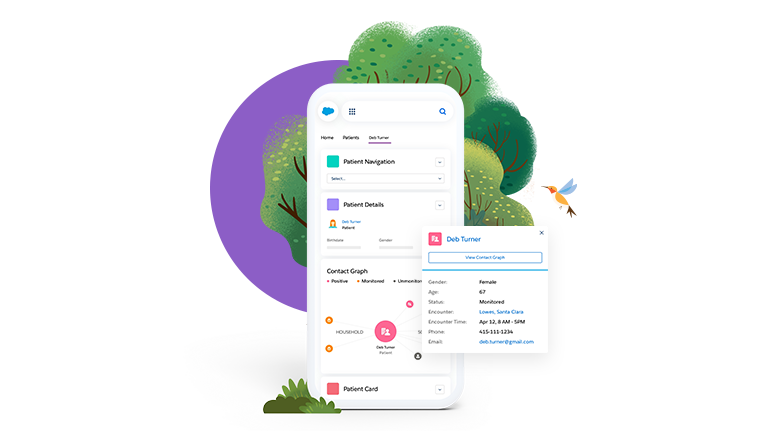Chapter 1: Put Plans in Place
Assemble your team, prioritize your candidates, and secure your platform and data.

Assemble your team members and systems.
Begin by establishing a multidisciplinary team of stakeholders. It may include leaders from your organization, health officials, essential labor, customer or community representatives, and others. Including a range of partners helps you capture diverse perspectives and build trust. That team should convene to reaffirm the vision and mission and then work together to develop strategies and approaches to tackle the challenge ahead.
Decide on a technology platform that will help you meet your goals for execution and give you the flexibility to switch gears as things change. With the right platform, you’ll have a system that can:
- Scale with you and your vaccine management requirements as they evolve
- Connect you and your team members – whether they’re in an office, in the field, or at home
- Reduce the need for manual processes with automation and workflows
- Serve as a single source of truth for your customers, employees, and stakeholders
In order to move quickly, your technology platform should also be easy to deploy. Cloud-based platforms can be implemented in weeks, not months or years, and can connect to legacy systems easily. Prebuilt platforms or connections mean your program can get up and running sooner and your team members can begin working more quickly. And since cloud-based platforms are easier to maintain, you’ll have peace of mind knowing your platform is always up to date so you can focus on more pressing challenges.

“The scale and urgency of the COVAX mission calls for tools we can expand quickly and use to manage what has become one of the largest and most complex undertakings ever in global health.”
Surface key insights to help manage vaccine resources.
Pull data from multiple systems into a platform with an easy-to-use data visualization dashboard. That lets you see your vaccine management data at a glance and leads to quick and actionable insights. Data visualizations can quickly uncover stories and identify trends in data so you can make data-driven decisions.
Establishing how to prioritize recipients and distribute the vaccine will be your first challenge, regardless of the size of the population you’re managing. Define clear procedures for implementing official guidance to help you allocate vaccines. Some groups are more susceptible to the worst outcomes from the virus based on risk factors such as age, preexisting conditions, or line of work. Prioritize your critical at-risk groups, followed by subsequent at-risk groups, until you’ve accounted for your entire population.
A unified platform helps by letting you categorize individuals based on their available health records. With an understanding of recipients’ risk status, you can align your vaccine distribution plans more effectively. Salesforce recommends that artificial intelligence (AI) should not be used to make allocation decisions or to predict or infer personal characteristics that would impact a person’s eligibility or priority for a vaccine.
As you schedule appointments, ensure you will have the supplies you need for each one. Decoupled systems – such as one managing scheduling and another tracking inventory – can lead to problems. You could end up with too much vaccine and not enough recipients, wasting precious doses. Or, you might run out of doses, wasting individuals’ time and energy – and leaving them unprotected. Or, you might even be missing a critical link, such as the needles to deliver the doses into arms. A system that links related information avoids such missteps.
Use a secure and connected platform.
Security is essential to building trust in your program. Vaccine management will require secure, reliable data connectivity across private and public entities leveraging both clinical and nonclinical IT systems. When using data from multiple systems, ensure those connections and the data they contain remain secure and help you meet your compliance obligations for handling that data (such as ASIP Santé HDS, CFR Part 11, FedRAMP, HIPAA, HITRUST, NEN 7510, or other laws and standards).
If you’re currently using a legacy system or systems, one of the best solutions is a platform that can easily connect those systems and integrate them into a single self-serviceable location. Unifying electronic health records (EHR), immunization information systems (IIS), or other systems within days or weeks can help ensure real-time connectivity throughout your vaccine management program and unlock greater visibility into each immunization candidate while safeguarding their data.
Next: Chapter 2: Raise Awareness and Begin Outreach
- Engage with individuals on any channel
- Use chatbots to scale support operations
- Provide the public with self service portals to access vaccination program details on demand

















